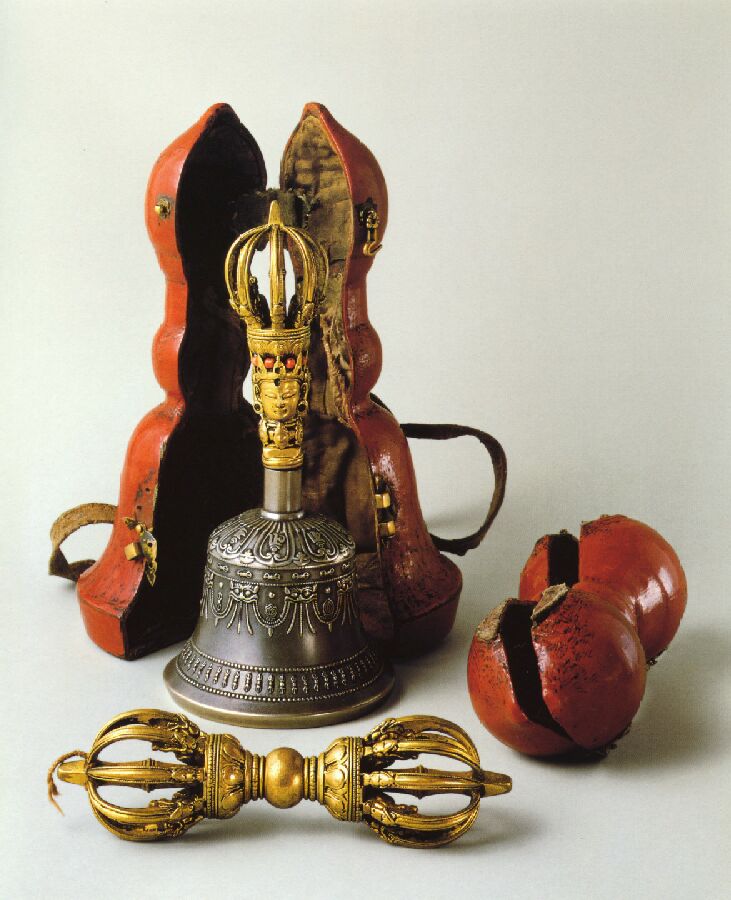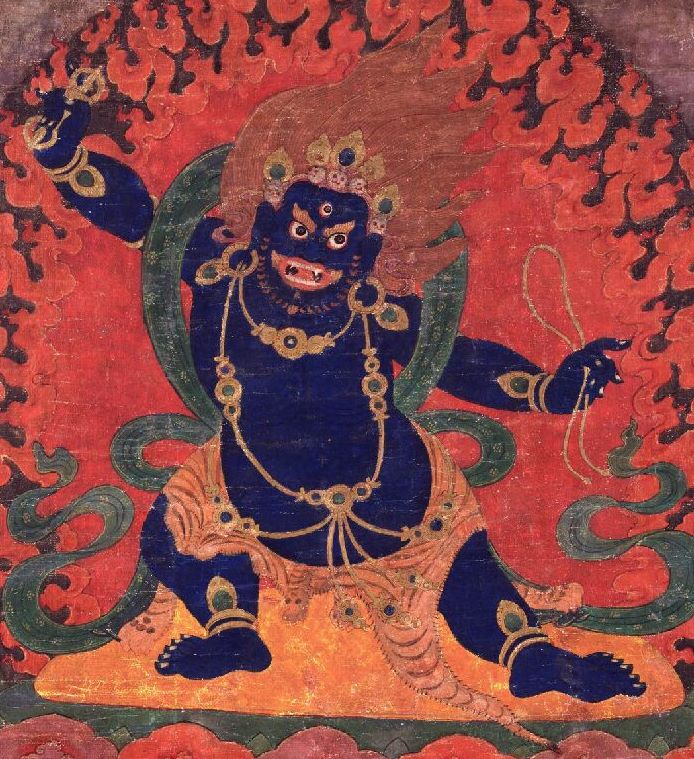Buddhist practice and Buddhist art have been inseparable in the Himalayas ever since Buddhism arrived to the region in the eighth century. But for the casual observer it can be difficult to make sense of the complex iconography. Not to worry—Himalayan art scholar Jeff Watt is here to help. In this “Himalayan Buddhist Art 101” series, Jeff is making sense of this rich artistic tradition by presenting weekly images from the Himalayan Art Resources archives and explaining their roles in the Buddhist tradition.
The Vajra Scepter, Part 1: Multiple Meanings

The Sanskrit term vajra (Tibetan: dorje) appears throughout Himalayan and Tibetan Buddhism. For such a simple sounding word, it actually has a huge number of meanings and uses. From the Indian Vedic tradition, the vajra scepter was thought to be something akin to a lightning bolt, and belonged to the god Indra. From the Indian Puranic literature, it was a weapon made from the bones of a sage (rishi). More importantly for Buddhists, vajra has come to represent all of tantric Buddhism,referred to as Vajrayana, or the vajra vehicle.
The term was also used in reference to the historical Buddha. The location where he reached enlightenment, modern-day Bodhgaya, was called Vajrasana. The posture of his entwined legs was called vajrasana, and the mental concentration he had while attaining enlightenment was called vajra samadhi. Vajra is also used in sutra titles and in names of characters. Aside from those early Buddhist uses, there are also numerous hand gestures (mudra) that use the term vajra, along with physical yoga routines, sexual postures, and breathing exercises.
Vajra is also commonly used as a prefix in the names of Indian gods and local Himalayan and Tibetan deities when they are adopted into the tantric pantheon: Dorje Legpa, Dorje Yudronma, and Vajrabhairava, for instance. An important tantric Buddhist deity is even named after the vajra—Hevajra, which means “Hail to the Vajra.” In tantric texts, Hevajra is described with many of the same characteristics of the god Indra.
 As a physical object, the vajra is generally small enough to be held in the hand, made of metal (but not always), and fashioned arond a sphere and intersecting central prong. Typically, it has five or nine prongs at each end, which bend inward to form a rounded enclosure. Vajras can have as few as one prong or over one hundred prongs. These unusual scepters are used for specific ritual practices. When a deity such as Vajrapani, in wrathful form, is wielding the vajra in the upraised right hand, the vajra is understood to be a weapon, like a lightning bolt in the hands of Zeus or Indra. In the example at right Vajrapani is throwing it as a weapon intended to stun the victim, obstacle, or mental delusion. Immediately after that, the victim is bound and subdued by the vajra-tipped lasso that Vajrapani holds in the left hand.
As a physical object, the vajra is generally small enough to be held in the hand, made of metal (but not always), and fashioned arond a sphere and intersecting central prong. Typically, it has five or nine prongs at each end, which bend inward to form a rounded enclosure. Vajras can have as few as one prong or over one hundred prongs. These unusual scepters are used for specific ritual practices. When a deity such as Vajrapani, in wrathful form, is wielding the vajra in the upraised right hand, the vajra is understood to be a weapon, like a lightning bolt in the hands of Zeus or Indra. In the example at right Vajrapani is throwing it as a weapon intended to stun the victim, obstacle, or mental delusion. Immediately after that, the victim is bound and subdued by the vajra-tipped lasso that Vajrapani holds in the left hand.
The vajra scepter is almost always accompanied by a bell with a half vajra handle (Sanskrit: ghanta). Numerous other ritual objects are marked with the vajra or more commonly, the half-vajra. In the general rules of tantric Buddhist initiation each initiate is required to own a vajra and bell.
Thank you for subscribing to Tricycle! As a nonprofit, we depend on readers like you to keep Buddhist teachings and practices widely available.